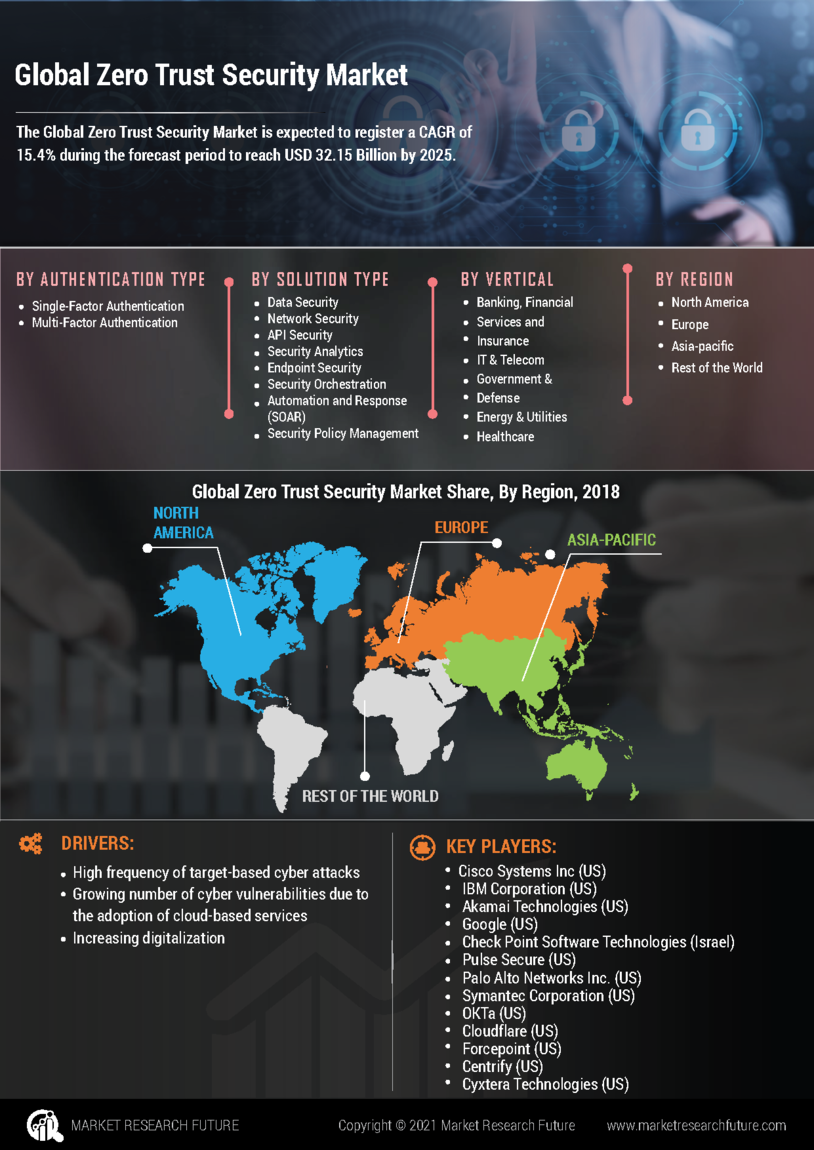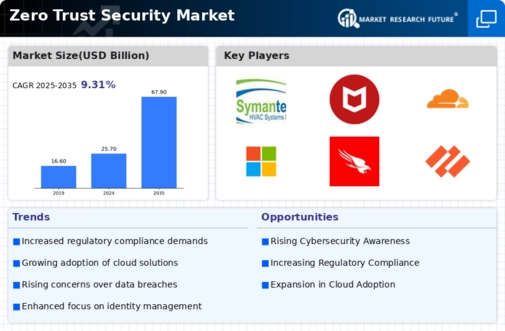Rising Cybersecurity Threats
The Zero Trust Security Market is experiencing heightened demand due to the increasing frequency and sophistication of cyber threats. Organizations are recognizing that traditional perimeter-based security models are insufficient in protecting sensitive data. As cyberattacks evolve, the need for a Zero Trust approach, which assumes that threats could be both external and internal, becomes more critical. According to recent data, the global cost of cybercrime is projected to reach trillions of dollars annually, prompting businesses to invest in robust security frameworks. This shift towards Zero Trust principles is expected to drive significant growth in the market, as companies seek to mitigate risks and enhance their security postures.
Shift to Remote Work Environments
The Zero Trust Security Market is witnessing a transformation driven by the shift to remote work environments. As organizations embrace flexible work arrangements, the traditional security perimeter has become increasingly blurred. This evolution necessitates a Zero Trust approach, where every user and device is authenticated and authorized, regardless of their location. The market is expected to expand as companies invest in solutions that secure remote access and protect sensitive data from potential breaches. With a significant percentage of the workforce now operating remotely, the demand for Zero Trust security solutions is likely to surge, reflecting the changing dynamics of the workplace.
Regulatory Compliance Requirements
The Zero Trust Security Market is significantly influenced by the increasing regulatory compliance requirements across various sectors. Organizations are compelled to adhere to stringent regulations such as GDPR, HIPAA, and PCI DSS, which mandate the protection of sensitive information. Failure to comply can result in hefty fines and reputational damage. As a result, businesses are adopting Zero Trust architectures to ensure that they meet these compliance standards effectively. The market is projected to grow as organizations prioritize security measures that align with regulatory frameworks, thereby fostering a culture of accountability and transparency in data management.
Integration of Advanced Technologies
The Zero Trust Security Market is being propelled by the integration of advanced technologies such as artificial intelligence and machine learning. These technologies enhance the capabilities of Zero Trust frameworks by enabling real-time threat detection and response. Organizations are increasingly leveraging these innovations to analyze user behavior and identify anomalies that may indicate security breaches. The market is anticipated to grow as businesses recognize the value of incorporating advanced technologies into their security strategies, thereby improving their overall resilience against cyber threats. This trend highlights the importance of adopting a proactive approach to security in an ever-evolving threat landscape.
Increased Investment in Cybersecurity
The Zero Trust Security Market is benefiting from a marked increase in investment in cybersecurity initiatives. Organizations are allocating substantial budgets to enhance their security infrastructures, driven by the recognition of cybersecurity as a critical business priority. This trend is reflected in the projected growth of the cybersecurity market, which is expected to reach hundreds of billions of dollars in the coming years. As businesses seek to protect their assets and maintain customer trust, the adoption of Zero Trust principles is likely to gain momentum. This investment surge underscores the urgency for organizations to implement comprehensive security measures that align with the Zero Trust model.


















Leave a Comment